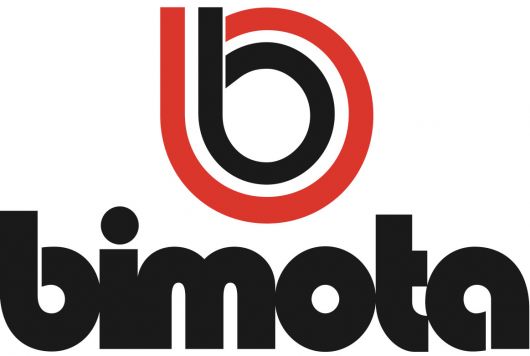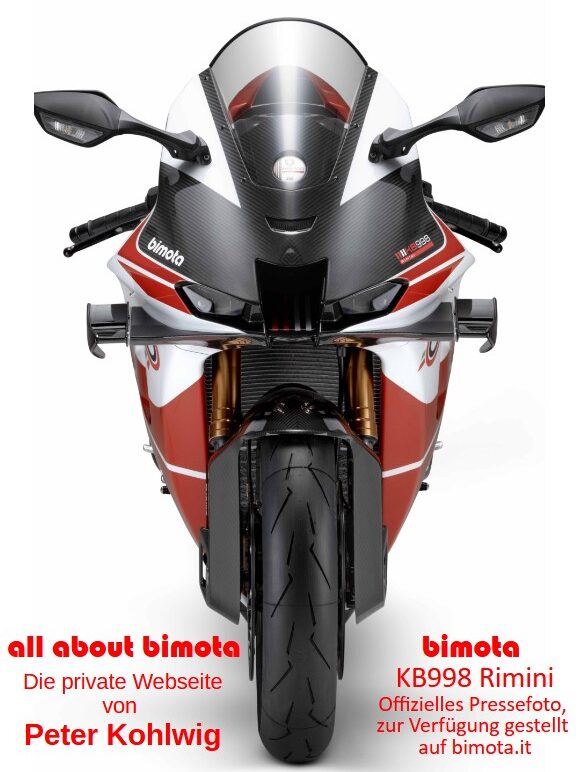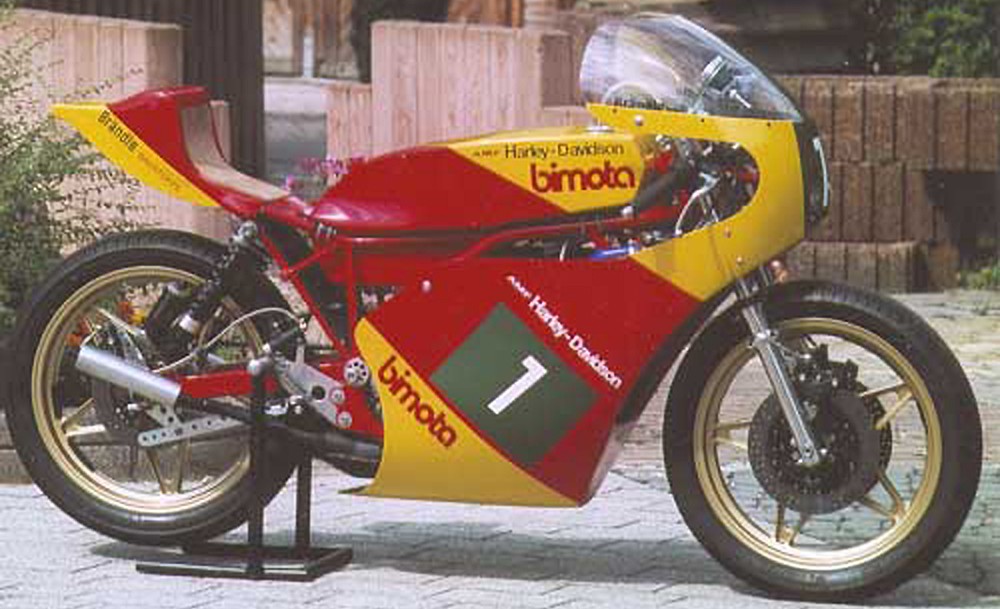
| Designer | Massimo Tamburini | Premiere | |
| Production period | 1976 – 1977 | Production numbers | 35 |
| Power | 41 kW (56 PS) | Displacement | 249 cc |
| Topspeed | depending on ratio | Weight | approx. 95 kg |
| Technical basis | Aermacchi 250 / 350 |
Harley-Davidson entered into a partnership with the Italian manufacturer Aermacchi in 1960. Aermacchi originated as part of Aeronautica Macchi, an aircraft manufacturer based in Varese, and began producing scooters and motorcycles after World War II. Following the merger with Harley-Davidson, the company ventured into motorsports. After achieving some partial successes, the racing machines built by Aermacchi began competing under the Harley-Davidson name from 1973 onwards.
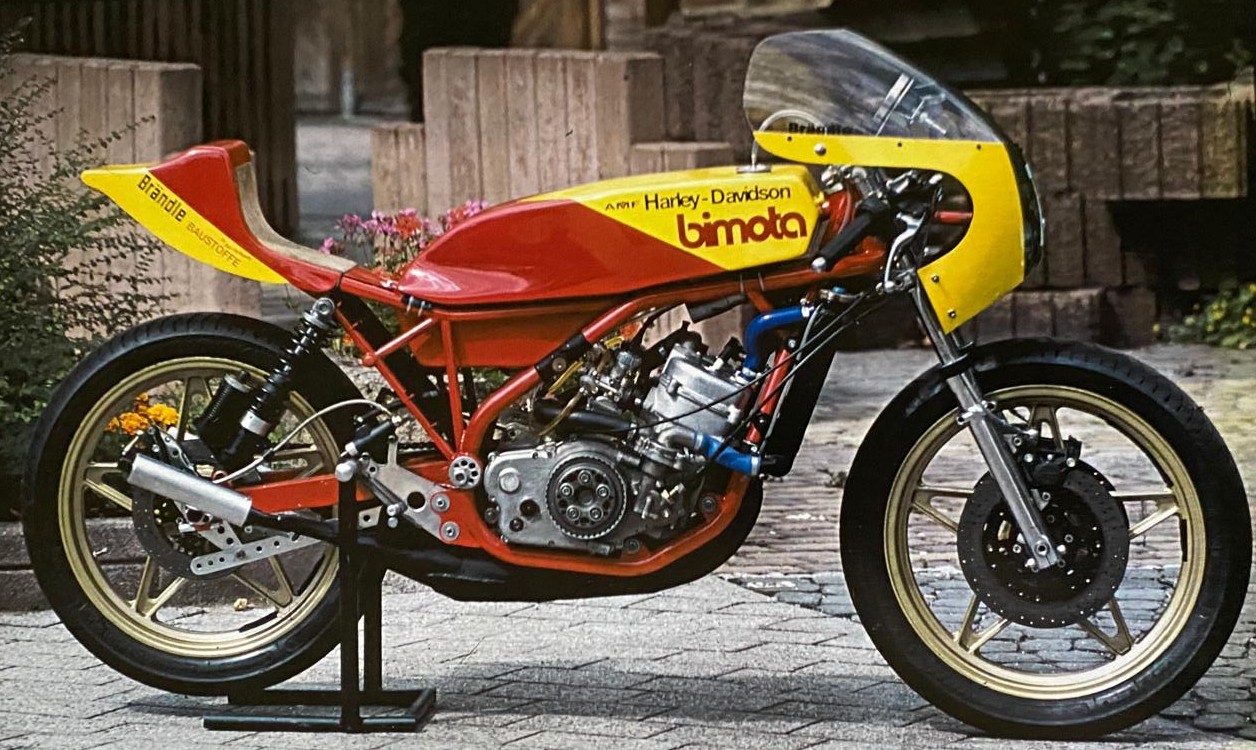
With Walter Villa as the rider, Harley-Davidson won the 250cc World Championship in 1974. Walter Villa repeated his title victory in 1975, and the second rider, Frenchman Michel Rougerie, even became vice world champion.
Building on these successes, Harley-Davidson planned to enter the prestigious 500cc class and commissioned Bimota in 1975 to develop a chassis for the HDB1. For the 1976 season, Tamburini designed a chassis for the successful 250cc and 350cc racing machines. He based it on the concept of the YB1, using a closed double-loop frame reinforced above the engine with two cross tubes between the upper and lower sections.
Tamburini also adopted the rear-wheel suspension concept from the YB1. The box-section swingarm was supported by two Marzocchi gas-pressure shock absorbers attached to the rear frame. A new feature, however, was the eccentrically mounted swingarm pivot, allowing for adjustments to the chassis geometry.
Together with other components such as the Brembo braking system, Campagnolo wheels, and a Ceriani fork, the race-ready HDB2 was approximately 13 kilograms lighter than Harley-Davidson’s official competition machine.
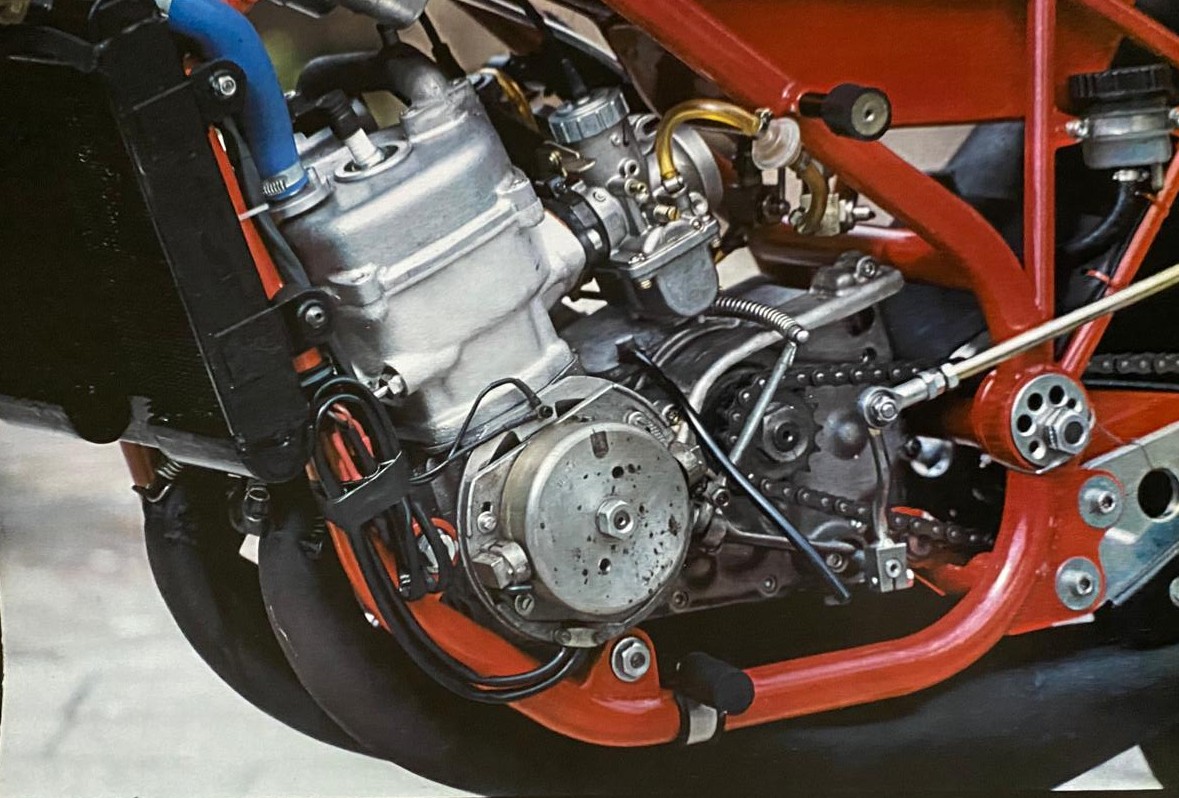
Bimota also offered the frame of the HDB2 in a modified form for Yamaha’s 250cc and 350cc engines under the name YB2. However, for the Yamaha engines, Tamburini designed a new tubular swingarm with an upper brace and an almost horizontally mounted central shock absorber. In the Grand Prix races of the 1976 season, both the YB2 and HDB2 models achieved numerous successes.
Walter Villa won five GP races in the 250cc class with the HDB2 and secured another world championship title in 1976. Italian riders Uncini and Buscherini also claimed Grand Prix victories with the YB2 in the 250cc and 350cc classes. Many additional podium finishes were achieved, including by other riders.
However, this was not the full list of achievements in the 1976 season. Another team, Morbidelli, also competed with a Bimota chassis. In the first 250cc Grand Prix in Misano, Pileri won with the Morbidelli-Bimota, followed by Uncini on the Yamaha-Bimota in second place, and Walter Villa in third place on the Harley-Davidson-Bimota.
A similar success followed in the second 250cc race in Misano. This time, Uncini claimed victory on the Yamaha-Bimota, ahead of Agostini on the Morbidelli-Bimota, with Walter Villa once again securing third place on the Harley-Davidson-Bimota.
